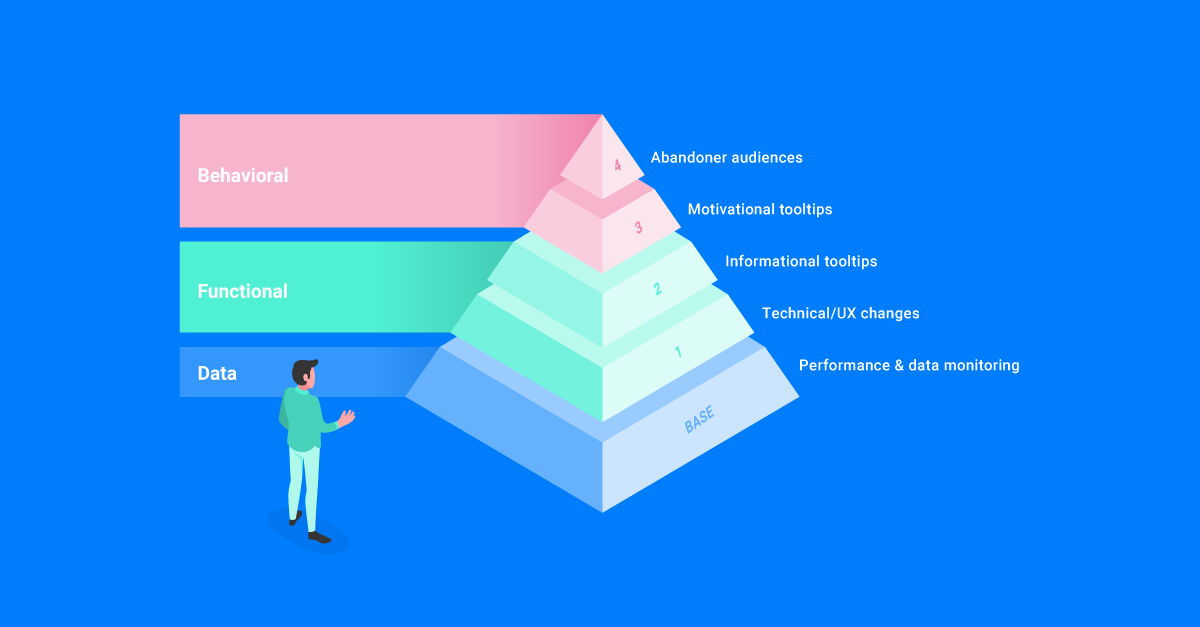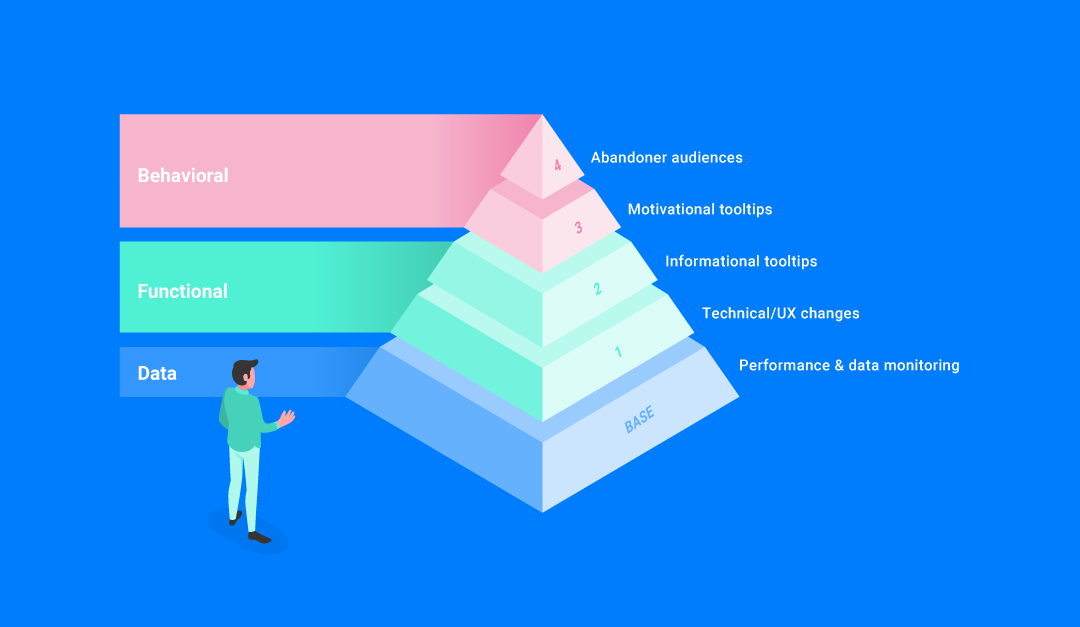
The Exatom webform optimisation pyramid
Have you ever heard of a concept that explains the methodology of optimising webforms and data input fields on check-out pages? It can be compared to the Maslow’s Hierarchy of Needs. Needs lower down in the hierarchy must be satisfied before individuals can attend to needs higher up. This methodology is similar to Exatom’s optimisation pyramid; it helps to prioritise the webform optimisation efforts. In this blog we would like to share our optimisation pyramid with you.
The old way of webform optimisation
The Exatom platform provides insights to discover the bottlenecks of webforms through form analytics and field metrics. Besides that, the platform also quantifies the missed conversion opportunity: the monetary value of the visitors that abandoned the webform or check-out. These are necessary insights that aren’t available within analytics suites like Adobe or Google Analytics. It’s essential to understand where visitors abandon your forms, because this leads you to the answer why visitors abandon your forms. That enables product owners and conversion rate optimisation specialists to make changes and monitor the effect of it. How to handle and prioritise these changes, was up to our clients. At Exatom, we conceptualised the optimisation pyramid to provide our clients a structured approach.
The new way of webform optimisation
We already referred to Maslow’s Hierarchy of Needs, where needs lower down in the hierarchy must be satisfied before individuals can attend to needs higher up. It works similarly in our optimisation pyramid and prioritises the optimisations. Exatom’s optimisation pyramid consists of 4 optimisation levels, on top of the foundational level. You can start at any level if you like, but it will be more efficient to finish optimisation at a lower level in the first place. When this is done (or not feasible, as we will explain later), you can move up one level and start from there.
The tiers of Exatom’s pyramid
The base level of the pyramid, is the foundational data level where performance & data monitoring is set up. This is crucial, as you don’t want to put a lot of energy in optimisations, when at the same time performance goes down due to a browser update causing an issue, for example. Staying on top of how your forms are performing is something we consider highly important.
The four optimisation tiers are basically split in two groups: functional and behavioural. Functional means that the bottlenecks identified are related to technical or UX causes. Technical can be a browser update causing issues, for example. UX is kind of technical as well, but more focussed on what the user experiences on the webform. Like a phone number input that’s not accepted, as the field requires a different format. Behavioural means that abandonment is related to behaviour or perception of the user. Which can be distraction or hesitation caused for example by a required field that logically doesn’t correspond with the purpose of the webform (in the perception of the user). Which could be the case when asking for a birth date when creating an account for an e-commerce website. One wonders why they require this information.
The functional tier starts with technical/UX changes. Functional issues need to be fixed as soon as possible, nobody would disagree probably. But at Exatom we experienced that this is sometimes easier said than done. For example when the development resources or budgets are limited, or the forms are white-labeled webforms with no access to the code. In those cases you can set up informational tooltips. These tooltips are smart, data-driven messages next to a field to help the user fill in the fields correctly. This type of smart tooltip can be run as a campaign until the issue is technically solved.
Even when functional issues are solved, you will always have users that abandon the webform or check-out due to other causes. As mentioned earlier using the birth date field example. For these, you can activate motivational tooltips, which are tooltips that nudge a visitor to complete the form. Typically these address social proof, scarcity, urgency, security, etc. There are many articles on the web about persuasive messages that can help marketers.
Last but not least: for those users where the motivational tooltips won’t help and they abandon your form, we create abandoner audiences. This is level four of the optimisation pyramid. At Exatom we distinguish three different audiences, related to the user’s progress on the form:
- Form view only
- Form start but not completed
- Form submitted but failed to convert
These audiences can be activated on social (Facebook, Instagram, etc.), search (Google Ads, Bing) display (any DSP) or email (any ESP)n for retargeting.
100-Days project
The optimisation pyramid is used in Exatom’s ‘100-days projects’. In 100 days, we set up the platform and monitoring, do the analysis, turn this into recommendations and execute the recommendations together with the client. Beginning at level 1 with functional/UX changes, running A/B tests in level 2 & 3 with smart tooltips and activating the audiences for media in level 4. In the next few weeks we will share details of such a project we recently executed for a luxury retailer.
Do you want to know more about the 100-days projects? Let’s get in touch!
Team Exatom
